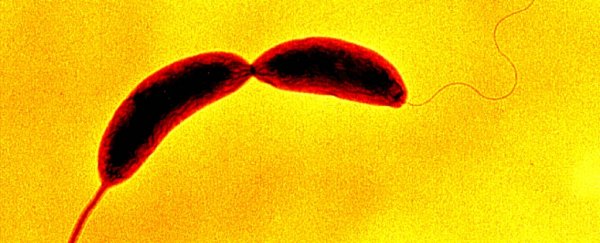Bacteria may not have a central or sensory nervous system as we know it, but they can still physically "feel" the world around them, according to a new study.
It turns out the tiny microorganisms don't just respond to chemical signals - they also have a sense of touch, and can recognise surfaces and respond to them. Wow.
Our sense of touch is a very important tool for living in the world. It helps avoid hazards and dangerous surfaces, and keeps you from crushing delicate objects.
For bacteria, it helps them determine which type of surface they're in contact with - such as a mucous membrane or intestinal wall - and therefore colonise and attack host cells.
It's what happens in the first few seconds after coming into contact with a surface that's crucial for successful infection, the researchers say.
To explore the mechanism by which bacteria sense surfaces, they studied a harmless species called Caulobacter crescentus.
"We have little knowledge of how bacteria read out mechanical stimuli and how they change their behaviour in response to these cues," says senior researcher Urs Jenal of the University of Basel's Biozentrum.
"Using the non-pathogenic Caulobacter as a model, our group was able to show for the first time that bacteria have a 'sense of touch'. This mechanism helps them to recognise surfaces and to induce the production of the cell's own instant adhesive."
Some bacteria have an appendage called the flagellum - whip-like structures that propel them around. Some have just one flagellum, others have many. The juvenile C. crescentus has a single flagellum that it sheds after a set period, or after it finds a suitable surface to adhere to.
By rotating this flagellum, the bacteria can travel through liquids. But these microorganisms don't have muscles - movement is enabled by energy generated by the transfer of protons down the cell membrane.
And it's this mechanism that allows the bacteria to "feel", the researchers have found. When cells come into contact with surfaces, the motor that drives the flagellum is interrupted. This in turn interrupts the proton flow.
Within seconds of this occurring, the bacteria responds, producing the adhesin that will anchor it in place.
This knowledge could help us understand dangerous bacteria too, says Jenal.
"Even though Caulobacter is a harmless environmental bacterium, our findings are highly relevant for the understanding of infectious diseases," he explains. "What we discovered in Caulobacter also applies to important human pathogens."
The research has been published in the journal Science.
